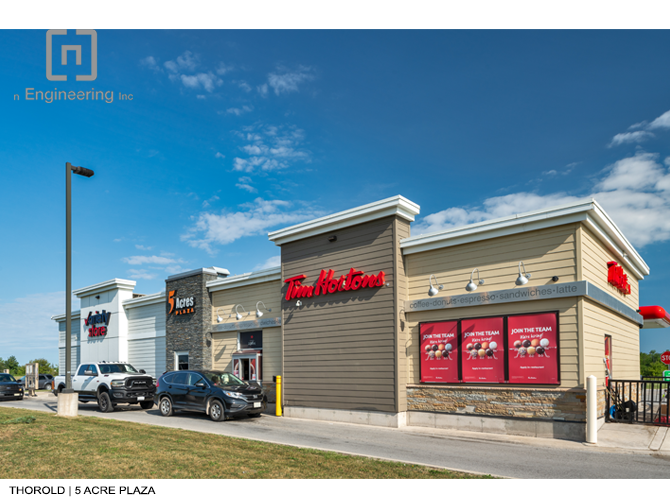In Ontario, urban development is on the rise, with cities and towns experiencing rapid growth. Alongside this development, the demand for parking has surged, posing challenges in urban planning. A Parking Justification Study Ontario is an essential tool used by developers, municipalities, and engineers to ensure that parking provisions align with the needs of a growing population while optimizing space usage. This study provides a comprehensive analysis of the parking needs of a specific development, justifying the number of parking spaces required, and helping local authorities make informed decisions on land use.
At n-Engineering, we specialize in providing detailed Parking Justification Study for developments across Ontario. Our team of experts utilizes cutting-edge methodologies and data analysis techniques to craft tailored parking solutions that meet both regulatory requirements and community needs. In this article, we will explore the significance of a Parking Justification Study Ontario, how it’s conducted, and the role it plays in ensuring sustainable and functional urban spaces.
What is a Parking Justification Study?
A Parking Justification Study is a detailed analysis of parking needs associated with a particular development or land use. The study evaluates factors such as the type of development, its location, proximity to public transport, expected demand, and existing parking infrastructure. Based on this analysis, the study justifies the number of parking spaces required, helping developers meet municipal standards while avoiding over-provisioning, which could lead to unnecessary land usage.
In Ontario, municipalities often require a Parking Justification Study Ontario as part of the planning process before approving new developments, especially for high-density residential, commercial, or mixed-use projects. These studies ensure that the parking requirements are not only adequate but sustainable in the long term.
Importance of a Parking Justification Study in Ontario
1. Optimizing Land Use
Urban land is a limited resource, and cities are increasingly focusing on optimizing land use to accommodate more people and businesses. A Parking Justification Study Ontario helps in determining the appropriate amount of parking spaces required for a project. Over-providing parking spaces can lead to the underutilization of valuable land, whereas under-providing can result in inadequate parking and traffic congestion.
By conducting a Parking Justification Study Ontario, municipalities and developers can ensure that the parking supply aligns with the actual demand. This leads to efficient land use, which is crucial for the growth and sustainability of urban areas.
2. Addressing Environmental Concerns
With climate change and environmental sustainability being top priorities, Ontario’s urban planning is focusing on reducing dependency on private vehicles. A Parking Justification Study Ontario helps in balancing the parking needs with environmental considerations. By considering alternatives like public transportation, carpooling, biking, and walking, the study can suggest ways to reduce the carbon footprint of the development.
Through smart parking design and alternative transportation solutions, the study can contribute to the creation of more sustainable, eco-friendly urban spaces that encourage the use of public transit and reduce traffic congestion.
3. Regulatory Compliance
Municipalities in Ontario typically have specific parking requirements that must be met for different types of developments. A Parking Justification Study Ontario ensures that the development complies with local zoning regulations and parking requirements. Developers must demonstrate that the parking provisions are adequate to support the needs of the new development while maintaining safety and accessibility.
By working with experts like n Engineering, developers can ensure that their Parking Justification Study Ontario meets the required standards and facilitates smoother project approval.
4. Reducing Traffic Congestion
One of the significant benefits of a Parking Justification Study Ontario is its role in reducing traffic congestion. By analyzing traffic patterns, public transit options, and parking needs, the study helps to prevent excessive parking demand from overwhelming local infrastructure. It identifies the optimal number of parking spaces required to minimize traffic congestion in and around the development area.
Ensuring that parking provisions are well-planned and adequate helps to prevent the common issue of vehicles circling the neighborhood looking for parking, which contributes to traffic delays and frustration.
How is a Parking Justification Study Conducted?
A Parking Justification Study Ontario involves several key steps, each designed to gather the data needed to support the parking requirements of a proposed development. Here is an overview of the typical process:
1. Data Collection
The first step in conducting a Parking Justification Study is gathering relevant data. This includes:
- Land Use Analysis: Understanding the type of development (e.g., residential, commercial, or mixed-use) and the projected number of units or square footage.
- Parking Demand Analysis: Analyzing the parking demand for similar developments in the area, considering factors like occupancy rates, building size, and location.
- Proximity to Public Transport: Evaluating the accessibility of public transport options such as bus, subway, or train stations in the vicinity, which could reduce the demand for parking.
- Traffic Patterns and Accessibility: Assessing the surrounding road networks and the availability of alternative transportation options.
2. Estimation of Parking Needs
Using the data gathered, a detailed parking demand model is created. This model accounts for:
- Current Parking Availability: The existing parking spaces in the area and their current utilization.
- Anticipated Parking Demand: Projecting the number of parking spaces needed based on the specific development’s size, use, and location.
- Peak Period Analysis: Analyzing the peak demand periods for parking, which may vary depending on the type of development (e.g., retail vs. residential).
3. Assessment of Alternatives
The Parking Justification Study Ontario often evaluates alternative parking solutions, such as:
- Shared Parking: This is especially useful in mixed-use developments where parking spaces for different uses (e.g., office, retail, and residential) can be shared, as demand for parking may peak at different times.
- Parking Reductions: In certain areas, parking requirements may be reduced if the development is located near transit hubs or has alternative transportation options.
- Sustainable Transportation Options: Encouraging the use of bikes, ride-sharing, and walking through the design of bike racks, pedestrian pathways, and carpool spaces.
4. Recommendations and Report Preparation
Once the data has been analyzed and parking needs have been assessed, the final step is to prepare a comprehensive report. This report includes:
- Justification of Parking Spaces: A clear explanation of the number of parking spaces required for the development, supported by data and analysis.
- Mitigation Strategies: If the study identifies potential parking shortages, it will recommend strategies to address these gaps.
- Compliance with Regulations: Demonstrating how the proposed parking provisions comply with municipal codes and zoning bylaws.
The report is then submitted to the local planning authority as part of the development application process.
The Role of n-Engineering in Parking Justification Studies
At n-Engineering, we bring extensive expertise in Parking Justification Studies Ontario, assisting developers and municipalities in navigating the complexities of parking regulations and urban planning requirements. Our team conducts in-depth analysis using advanced modeling techniques to deliver accurate and reliable parking solutions.
Here’s how n Engineering contributes to successful Parking Justification Studies in Ontario:
- Tailored Solutions: We understand that each development is unique, so we offer customized recommendations based on the specific needs of the project.
- Expert Guidance: Our team has in-depth knowledge of local zoning laws and parking requirements across Ontario, ensuring that your project stays compliant with municipal standards.
- Sustainability Focus: We prioritize environmentally friendly solutions, ensuring that your parking design promotes sustainable practices and reduces the environmental impact of the development.
Conclusion
A Parking Justification Study Ontario is an essential step in the planning process for urban developments across the province. By ensuring that the parking provisions meet the actual demand, it helps optimize land use, comply with regulations, and reduce traffic congestion. With the guidance of professionals like n-Engineering, developers can navigate the complexities of parking requirements, making informed decisions that support sustainable, efficient, and safe urban environments.
As Ontario continues to grow, the need for thoughtful, well-executed Parking Justification Studies will only increase. Whether it’s for a new commercial development, residential building, or mixed-use complex, partnering with n Engineering ensures that your parking solutions align with the needs of the community, regulatory standards, and environmental goals.

